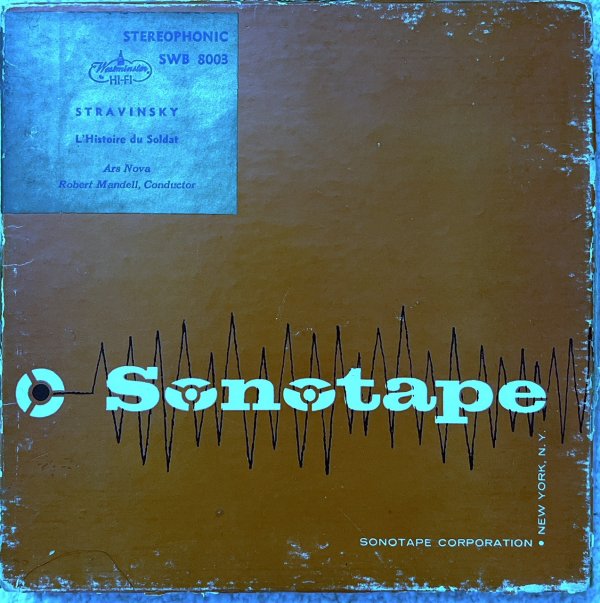On 100 th birthday of Henryk Szeryng DG reissue of beautiful 3xLP limited and numbered edition , still available for around 60 euro.
Attachments
Last edited:
Maybe looks similar, but it is totaly different design and airbearing.The arm on your TT looks similar to what i had when i was still using a TT...
Mine is a Forsell air bearing arm of the frist generation as i still have it somewhere...
Does duplication mean it is transferred from vinyl,?or digital? or is was as original recorded/mastered and transferred that way? (seems most logical).
:format(jpeg):mode_rgb():quality(90)/discogs-images/R-7641787-1445764438-5226.jpeg.jpg)
When I was interviewing Decca recording engineers for my Decca book back in 2013 and 2014, they said that the best thing about changing to digital recording was the ease of editing. One of them told me that he could hear in the LP every edit he did on every recording he engineered. If you buy or see a pro tape machine that came out of a recording studio, you can usually see all the marks from the razor blade cuts on the splicing blocks. Decca was a bit unusual in that when recording with multiple mikes which fed a multichannel mixer, they would mix the tracks onto the 2 track tape machine in real time, so that they did not have a 16 or 24 track tape that they would later remix (highlighting the flute or french horn for example). What you got in the recording studio the day of the session was the product of that day's work. Obviously this was for classical recordings, so there is a real sense of instruments in a real space in the finished recording.Hello Andrew,
You are correct, the original two channel master tape itself was copied many times and these copies were used in mass high speed tape duplication processes which were then packaged and sold. It is possible to find the same performance duplicated by different companies (in this case Bel Canto and Ampex) with slightly different packaging and fidelity.
In those days the art of editing was done with grease pencil, razor blade, editing block and splicing tape mechanically with the tape itself. The skill of those early craftsmen and women is amazing to say the least. I hope you have the opportunity to hear a well made prerecorded tape soon.
Cheers!
Absolutely! A stunning recording and transfer by Bob Witrak's HDTT. It was recorded in 1956! at a live concert at Carnegie Hall. The original is actually a Westminster 7.5ips 2 track tape (copied I believe in real time) by Sonotape. I have Bob Witrak's DSD256 which is one of the very best digital albums I have. He first released it in 96/24, one of his earlier releases, but as his duplication equipment has improved, you can hear the quality of the best hirez formats. Bob has been on the leading edge of releasing hirez files. He was among the first to release DSD, and has been doing native DSD256 transfers as well as DXD352 transfers. If you are a fan of classical and jazz and want to get really close to the sound of 2 track tape (both 15ips and early 7.5ips), HDTT is the place to go. He has sales around holidays and currently there is a Father's Day sale (so if you are a father, grandfather, or have ever thought about being a father treat yourself to some of his rips).One of best recordings I have purchased last year was Stravinsky’s L’ Histoire du Soldat transferred to DSD 256 fs from original master tape by HDTT, amazing sound quality

This is a great set. I have three versions of this. The original LP's, the 7.5ips 4 track stereo commercial tapes, and a 15ips 2 track set of dubs of the master tapes (production or safety). Unfortunately, the 15ips 2 track dub was done a bit carelessly and the tape of the 2nd sonata and partita ends about 1 1/2 minutes short of the end of the partita (the end of the famous and fabulous Chaconne, one of Bach's greatest compositions). Neither the vinyl nor the tape is as good sound quality as the tape. I may just buy the new records to be able to record the last 90 seconds of the Chaconne to splice onto the tape.On 100 th birthday of Henryk Szeryng DG reissue of beautiful 3xLP limited and numbered edition , still available for around 60 euro.
I have a boxed set of Bernstein's earlier Mahler series with the New York Philharmonic, done through the '60's for Columbia. Bernstein did the first complete Mahler series on record and was, along with Mahler's former assistant Bruno Walter, largely responsible for the reinvigoration of Mahler in the US (and maybe the world). This is album is part of his second series, this time on digital with the Vienna Philharmonic, with whom he also did the complete Beethoven symphonies, also on vinyl. I don't know this set, but in the earlier recordings, you can hear Bernstein's great passion with Mahler, I think a kindred spirit to Bernstein. Both were composer-conductors, eminent in both fields, both were music directors of the New York Philharmonic, and both were of Jewish heritage, but, I believe, non-practicing.Listened to this magnificent vintage LP in the music room of a friend yesterday.
Both the sonics and interpretation are memorable.
Afterward I asked my friend and was told that that the current market price was more than usd1k for a mint condition one!
View attachment 79206
| Steve Williams Site Founder | Site Owner | Administrator | Ron Resnick Site Owner | Administrator | Julian (The Fixer) Website Build | Marketing Managersing |

